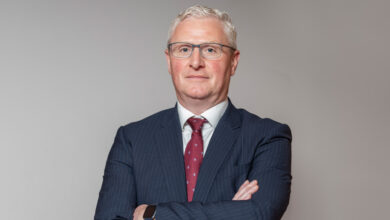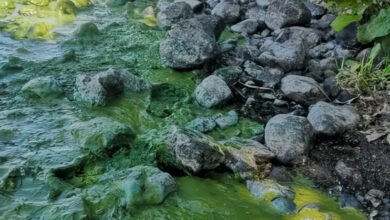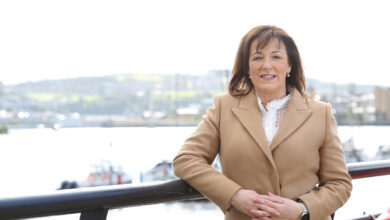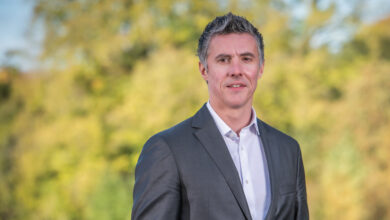The challenge of sustainability

The European Environment Agency’s (EEA) state of the environment report confirms a curate’s egg scenario as the EU pushes for ecological sustainability
Europe is still on its journey of helping to meet the overarching objective, which will see the earth operating fully within its ecological limits by 2050, according to European Environment Agency (EEA) analyst Jock Martin.
“This is the vision agreed within the EU’s 7th Environmental Action Programme,” he said. “And as the latest sustainable development trends for Europe confirm, this is still very much a work in progress.”
As Head of Integrated Environmental Assessment (IEA) at the Copenhagen-based EEA, he is responsible for the strategic development of integrated environmental assessment methods and products within the organisation. A core requirement of the IEA Programme is the production of a five year European state of the environment and outlook (SOER) report. This covers a myriad of environmental accounting and sustainable indicators.
Martin told the annual Environment Ireland conference that SOER 2015 will inform policy makers on how best to direct the EU’s various sustainability programmes, which must be geared to meeting the 2050 objectives of the latest Environmental Action Programme.
“Our work has confirmed that policies have delivered substantial benefits for the environment, the economy and people’s well-being. But major challenges remain,” he said. “Europe faces persistent and emerging challenges linked to production and consumption systems within a rapidly growing global context. Achieving the 2050 vision requires system transitions, driven by more ambitious actions on policy, knowledge, investments and innovation.
“But doing so represents presents major opportunities to boost Europe’s economy and employment while, at the same time, putting the EU at the frontier of science and innovation.”
Roberts said that the most recent SOER report confirmed that fiscal and finance policies are key drivers of environmental trends. “Europe has made significant resource efficiencies,” he said. “But unsustainable production and consumption trends still abound. The agriculture, transport and energy sectors are three key areas of concerns for the future, in term of their sustainability levels,
“A number of overall trends are now emerging. Resource efficiency improvements have been notable over recent years but have not translated into increased ecosystem and social resilience. Moreover, the long term outlook is often less positive than recent trends.”
Martin discussed the results of the 2015 SOER report in the context of the thematic objectives set out for the 7th Environmental Action Programme. These are: protecting, conserving and enhancing natural capital; resource efficiency and the low carbon economy plus the safeguarding of human health in the context of environmental risks.
He said that, where natural capital is concerned, there is a long term lag between reduced pressures and positive changes. “In addition, pressure on ecosystem remains considerable. But this is only one of several sustainability challenges facing the EU and the world as a whole.
“World resource use is expected to at least double in the next three decades. The global population is expected to grow by 43 per cent by 2050 with Africa’s population increasing extremely fast. And projections on climate change have become increasingly worrying. Global temperature increases of 4⁰C or more by 2100 would create significant risks to global food security.”
Energy efficiency
The EEA director explained that whilst energy efficiency has increased there is still some way to go before Ireland can class itself as a low carbon economy. ”A case in point is the transport sector. Cars are more efficient. But, overall, fuel consumption and emissions continue to increase. Homes are now more energy efficient, but also much larger, thereby increasing pressure on land, water and materials.
Martin cited the specific challenge confronting the transport sectors throughout the EU and beyond. “A transition to electric cars will not get rid of traffic chaos,” he said. “So we must think outside the box on manners of this nature, to include services such as planning.
But Martin also pointed out that numerous good news stories can be identified against the backdrop of the EU’s push for enhanced levels of sustainability. “Eco industries have prospered, despite the recent downturn in the global economy. Many small companies are developing products and services to meet evolving environmental policies,” he said.
“Europe can be an environmental leader in the world. And we are already seeing this where emissions standards for cars are concerned. Fostering Europe 2050’s vision for sustainability depends on action that is taken today. And driving this process will be a commitment to recognise and foster innovation.”
Innovation
Martin added that technological, economic and social innovations can support long term transitions to a green economy. “Creating a green economy requires the upscaling of niche innovations,” he said. Public funded research has fostered many of the most successful and commercially important innovations. And Europe should not be afraid of leading the world on environmental standards. Innovations and investments can boost prosperity today. The reality is that Europe’s environmental leadership can set standards globally.”
Martin referenced green bonds as an innovative financing tool. These entail the use of debt capital markets to fund climate solutions. “They are a hybrid investment tool for financing transitions by combining public and private contributions. But the bottom line is that the environment is a driver for innovation, not a deterrent. We are also seeing significant innovation in urban systems and green infrastructure.”
Attending delegates were told that the Air Trees project in Madrid and Milan’s urban forest are two excellent projects of this kind. Using photovoltaic cells, the Air Tree produces a substantial amount of energy, which is then sold back to the local electric companies, the profits being used for maintenance of the structure. The second by-product is oxygen.
Policy and governance
Meanwhile, the creation of a number of vertical forests in the city of Milan will help produce a network of environmental corridors which will give life to the main parks in the city. Looking to the future Martin said that achieving Europe’s sustainable development goals for the future are possible.
“But this depends on the policy decisions taken right now,” he stressed. “Systemic change must deliver decent employment, prosperity and equity, while respecting environmental limits. SOER 2015 illustrates the success of the European policy. We should be confident in entering a new stage of environmental governance. But we also need to improve our knowledge base. The current SOER report will not be for 2020.
Martin also confirmed that Europe is now entering a new stage of environmental governance. “We need more emphasis placed on an action-solution-oriented knowledge base than the measurement-problem focussed model of today. Integration, across all species of social and economic activities will be required to deliver the sustainability standards that we all want to see.
“One key plank in EU’s strategy for the future may well be the advent of a European Environment Academy. This will help us grow a different type of expertise. Fundamentally, we require new thinking being brought to bear on the myriad sustainability challenges and opportunities that will come Europe’s way over the coming decades.
“And it’s all about developing a circular economy where nothing is wasted, resources are managed sustainably and bio diversity is protected. But the time for thinking and postulating is over. We all need to act now in order to guarantee the levels of sustainability required to head off the challenges, such as global warming, that are fast coming down the track.”





